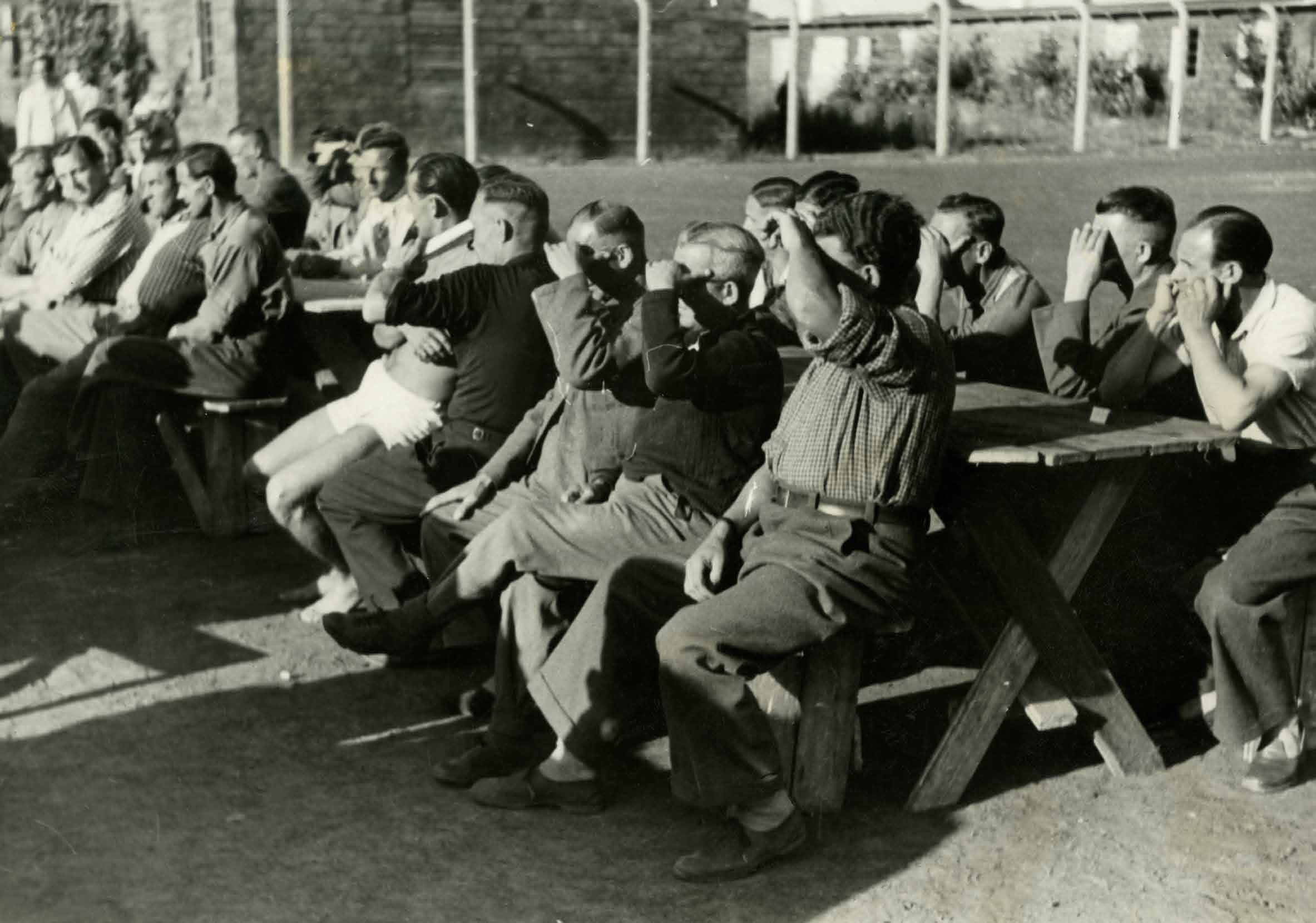Quarantine
camp, tool shed and monument object

Note: The
photos have not yet been released for the Internet under copyright law! German prisoners of
war returning home from Norway in the Falkensee transit camp, July 1946. Source: German
Historical Museum, Berlin, Schirn 15644/3
After the end of
the Second World War, the subcamp served as the "Agneshof quarantine
camp" to accommodate refugees, resettlers from the areas east of the Oder
and Neisse and as a transit camp for German prisoners of war who had returned
home. With a few structural interventions such as the installation of ovens and
chimneys and some interior painting, the camp remained almost unchanged. With the
dissolution at the end of 1948, the buildings were demolished over a period of
several years. Only the accommodation barracks, which are still preserved
today, and a service building, the foundations of which are also preserved,
remained standing. From the 1960s to
the 1990s, the nearby Staaken concrete works produced sand and used the
barracks as a tool shed and material store. For this purpose, the gable walls
were opened for large driveways, the ovens were removed again and most of the
inner transverse walls were removed. The rest of the area was largely
overgrown. Since 1993, the
city has been developing the historical park on the historic site, exposing
barrack foundations and other floor coverings, and finally renovating the
prisoner barracks in 2018. Today, the entire camp site is under monument
protection.
Children in the
Agneshof quarantine camp in Falkensee on October 9, 1946. Source: German
Historical Museum, Berlin, Schirn 15985/3a Interior view of
the preserved prisoner barracks with the ovens that were added later, photo
probably from the 1960s. Source: Walter
Thomas, Archive Museum Falkensee The Staaken
concrete works dismantled sand on the site of the former camp and used the only
prisoner barrack still standing as a material room. The recording is from the
1980s. Source: Archive
Museum Falkensee










